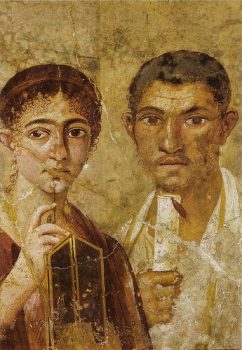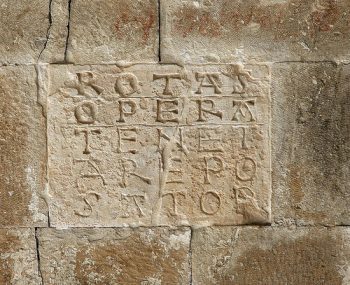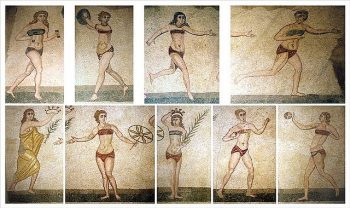The “madness” of the emperors: Nero II Posted by leire on Jun 29, 2012
As we said in the previous post, at first Nero’s government was totally dominated by the imposing presence of his mother. The new emperor was a docile and timid boy who ruled in the shadow of his mother. Nero was also fascinated by the festivities so much that any occasion was an excuse to organize…
The “madness” of the emperors: Nero I Posted by leire on Jun 23, 2012
Did you know that it is suspected that the origin of the “madness” of certain Roman emperors such as Nero or Caligula, was due to the ingestion of residual lead from the welding plates and glasses? Lead is a very harmful metal for health. Among the Roman emperors there were many insane people and dangerous as…
Non-personal verbal forms Posted by leire on Jun 15, 2012
The verb forms which do not have personal ending are known as non-personal verbs or noun-verbs. These verb forms simultaneously have nouns’ characteristics (they are nouns or adjectives) and verbs’ characteristics (tense, voice…). In Latin we have three verbal nouns (infinitive, gerund and supine) and two verbal adjectives (participle and gerundive). Morphology is as follows…
Verbal morphology II Posted by leire on Jun 10, 2012
Active voice Time characteristics of time and mood for active personal forms are: PRESENT TENSE Indicative Subjunctive Imperative Present 1st conjugation: -e- 2nd, 3rd, 4th conjugations: -a- Past imperfect -ba- -re- Future 1st & 2nd conjugations: -b- 3rd, 4th conjugations 1st singular person: -a- Rest of persons: -e- The imperative has no temporal…
Verbal morphology I Posted by leire on Jun 2, 2012
General characteristics of the Latin conjugation Latin conjugation is distributed in two voices: active and passive. How to set out and how to determine the conjugations: The statement of a verb consists, in that order, of the following forms: First person singular indicative present. Second person singular indicative present. Present infinitive. First person singular indicative…
Latin Palindromes Posted by leire on May 31, 2012
These are texts or phrases that can be read from left to right or from right to left. Here are some examples: In girum imus nocte et consumimur igni (We go about in the night and are consumed by fire.) Called ‘the verse of the devil’ they said that the devil himself taught a seminarian…
Roman soccer Posted by leire on May 29, 2012
“It is the game I like the most. It is very intense exercise and you get very tireds by dribbling and turning the neck back violently. So Antiphanes says: “damn, what neck pain!” And commenting the match he said: “He took the ball and passed it to aplayer while dodging another playing laughing. He put…







